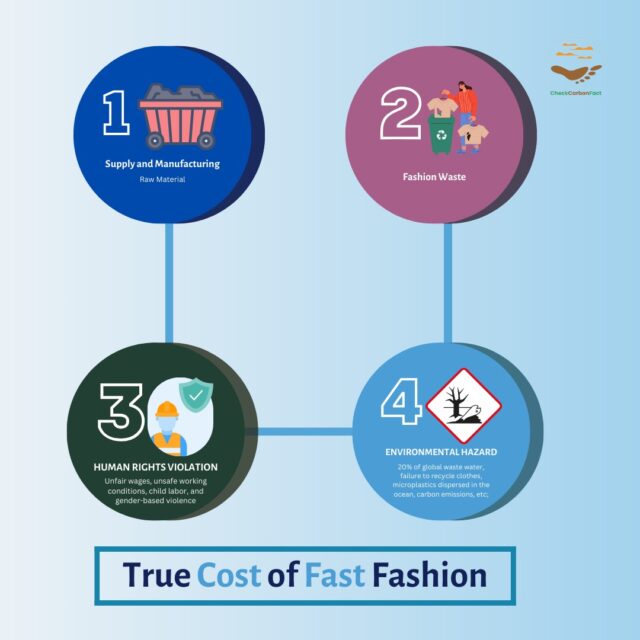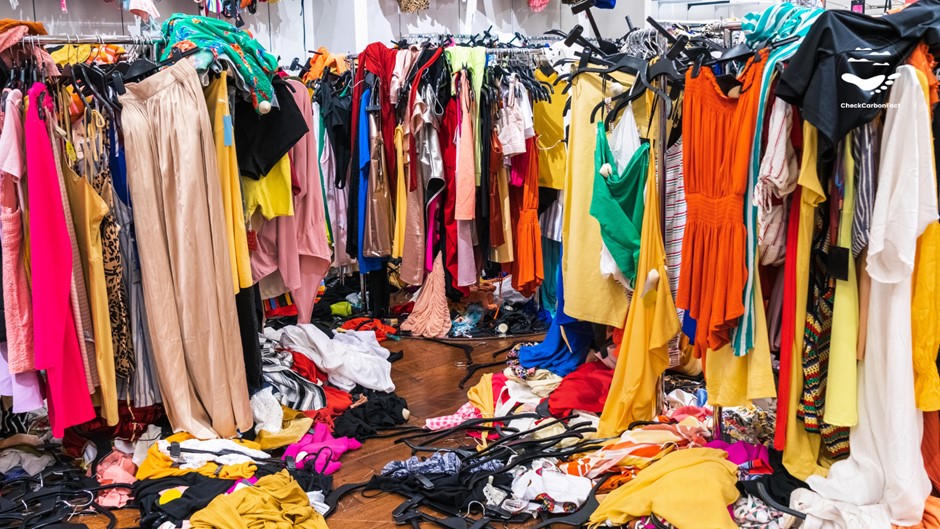The fast fashion sector, known for its quick production turnaround and budget-friendly options, has transformed the consumer experience of clothing accessibility and affordability. Instead of adhering to traditional four-seasonal releases, these brands constantly unveil new styles on a weekly or even daily basis, all at remarkably affordable prices.
Yet, beneath the appeal of fashionable and inexpensive attire lies a convoluted and concerning network spanning from production, consumption and disposal. From raw material acquisition to product disposal, the fast fashion supply chain bears extensive environmental and ethical ramifications that warrant thorough scrutiny.
This article will dissect the various stages of the fast fashion supply chain, examining the obstacles and repercussions linked with each phase.
Trends within the industry
According to Statista, 2021, the global value of the fast fashion industry stood at 36 billion USD in 2019, with projections indicating a surge to 43 billion USD by 2029. However, with its high revenue comes grave environmental and social impact. In 2018, the fashion industry contributed to around 2.1 billion metric tons of greenhouse gas emissions, with fast fashion accounting for half of this staggering figure. Industry labels churn out large quantities of synthetic, petroleum-based clothing in developing nations, resulting in significant emissions and textile waste.
The industry has been criticized for its practices to meet the escalating demand for inexpensive apparel. They face criticism for sweatshopping, where brands engage in producing massive quantities of synthetic, petroleum-based clothing in developing nations. In addition to exploiting these poor workers, such massive production significantly contributes to greenhouse gas emissions and exacerbates the issue of landfill waste.
Despite recent efforts within the industry to embrace sustainability, particularly through sustainable supply chain management (SSCM), current trends suggest a substantial disparity between aspirations and reality concerning environmental impact. As of now, the fashion industry remains a significant environmental threat.
Supply Chain Circle of Fast Fashion
At the core of the fast fashion industry lies a supply chain characterized by speed and efficiency. Raw materials are sourced from all corners of the globe, transformed into garments in factories often located in developing countries, and swiftly transported to retail outlets worldwide. This rapid cycle of production and consumption fuels the industry but comes at a grave cost to the environment, social cohesion and human rights.

Supply Phase: Sourcing of Raw Materials
The journey of a fast fashion garment begins with the sourcing and harvesting of raw materials, such as cotton, polyester, leather, and silk. While these materials are essential for clothing production, their extraction and processing pose significant environmental challenges. Cotton cultivation, for instance, demands vast quantities of water and pesticides, contributing to water scarcity and soil degradation.
Similarly, the production of polyester and leather involves the use of harmful chemicals and can lead to biodiversity loss and deforestation.
Manufacturing Phase: Assembly Line Process
Once raw materials are procured, they journey to factories in countries like Bangladesh and China, where they undergo transformation into finished garments. However, the manufacturing process has been accused for exploitative labour practices and hazardous working conditions for labourers.
Once the raw materials are procured, they undergo an assembly line process in factories, where garments are mass-produced at breakneck speed. While this approach streamlines production and reduces costs, it also raises concerns about worker exploitation, environmental pollution, and concerns on product quality.
Workers reportedly endure long hours in hazardous conditions, while synthetic materials release harmful chemicals into the environment during production and disposal. This raises concern about the need to balance efficiency with ethical considerations within the industry.
Distribution Phase: Moving Products Worldwide
The global movement of fashion products relies on intricate logistics and transportation networks. Raw materials traverse continents before reaching manufacturing hubs, where they are transformed into finished garments and distributed to retailers worldwide. This extensive supply chain contributes to greenhouse gas emissions, air pollution, and resource depletion.
Considering this challenge, embracing sustainable transportation practices and optimizing supply chain efficiency are essential steps towards reducing the environmental impact of fast fashion logistics.
Retailing Phase: The Final Stage
The retail operations stage marks the culmination of the fast fashion supply chain, where products are displayed, marketed, and sold to consumers. Retailers play a pivotal role in shaping consumer behaviour and driving demand for fast fashion. They employ various strategies to entice consumers, including visual merchandising and pricing tactics.
However, this stage also results in a perpetuation of a culture of overconsumption and disposability, leading to staggering levels of textile waste. Significant waste is generated through excess inventory, markdowns, and product returns. To mitigate this environmental impact, it will be crucial for the industry to embrace circular economy principles, such as product take-back programs and eco-friendly packaging.

Human Right Abuses
Human rights violations in the fast fashion supply chain are a pressing issue that cannot be ignored. The rapid production of garments, coupled with the relentless pursuit of low production costs, has led to widespread exploitation of workers in developing countries. As highlighted in various reports and studies, these violations encompass a range of issues including unfair wages, unsafe working conditions, child labor, and gender-based violence.
Numerous reports and investigations have exposed the extent of human rights violations within the fast fashion supply chain. For instance, the Rana Plaza collapse in Bangladesh in 2013, which claimed over 1,100 lives, epitomizes the catastrophic consequences of prioritizing profit over human lives. Similarly, investigations into garment factories in countries like Cambodia, Vietnam, and India have revealed rampant exploitation and disregard for worker well-being.
One of the primary concerns is the low wages paid to garment workers, with many earning below the minimum wage and struggling to make ends meet. This exploitation is exacerbated by the long working hours imposed on workers, often exceeding 100 hours per week in some cases. Furthermore, the working conditions in many factories are substandard, with workers exposed to hazardous chemicals and facing the risk of accidents and injuries.
Child labour is also a prevalent issue in the fast fashion supply chain, with children being deprived of education and forced to work in factories at a young age. This perpetuates a cycle of poverty and exploitation, denying children their fundamental rights to education and a decent childhood.
Women are particularly vulnerable to exploitation in the fashion industry, facing systemic sexual harassment and violence in the workplace. The pressure to meet production targets often leads to hostile working environments where women are subjected to abuse and coercion.
Moreover, the use of harmful chemicals in textile production poses serious health risks to workers, including respiratory problems, reproductive disorders, and even cancer. The lack of access to healthcare further exacerbates these issues, leaving workers vulnerable to both physical and mental health problems.
Consumers also Play a Role
Beyond labour exploitation, the fast fashion industry also contributes to environmental degradation through the waste it generates. The industry has become intertwined in a cycle of consumption and disposal that is wreaking havoc on the environment. With 92 million tonnes of textile waste produced annually and the apparel industry’s global emissions set to increase by 50% by 2030, the impact of fast fashion is undeniable.
Consumers play a significant role in this cycle. By perpetuating a culture of overconsumption and disposability, the industry leads to a staggering level of textile waste. Annually, the fashion industry manufactures up to 100 billion garments, yet a recent report by the UN United Nations Environment Programme showed that a staggering 92 million tons of clothing find their way into landfills. This throwaway culture has led to a decline in the number of times a garment is worn, exacerbating the problem of textile waste.
But the environmental toll of fast fashion extends beyond landfills. The industry is responsible for 20% of global wastewater and significant water wastage in production processes. For instance, findings reveal that it takes a staggering 20,000 liters of water to produce just one kilogram of cotton, contributing to water pollution and scarcity.
Moreover, the lack of recycling exacerbates the issue, with $500 billion lost annually due to under-wearing and failure to recycle clothes. Furthermore, the spread of microplastics derived from textiles contributes to ocean pollution, with textiles accounting for about 16%-35% of the microplastics dispersed in the ocean according to a European Environmental Agency report.
Call for Action
Despite these alarming statistics, fast fashion brands continue to produce twice the amount of clothes today than in 2000, resulting in more abuse, and increased pre- and post-production textile waste. Addressing human rights violations in the fast fashion supply chain requires concerted efforts from all stakeholders. Governments must enact and enforce stringent labour laws, ensuring compliance with international standards and holding corporations accountable for their actions. Fashion brands must prioritize ethical sourcing and transparency, conducting regular audits and investing in sustainable practices. Consumers, too, have a crucial role to play by demanding accountability and supporting ethical and eco-conscious brands.
Similarly, companies must be held accountable for their actions, and stronger regulations need to be implemented to ensure the rights and dignity of workers are respected. Consumers also have a role to play by demanding transparency and ethical practices from the brands they support. Only through collective efforts can we create a fashion industry that is truly sustainable and just for all.
Found it interesting and would like more in the mail?



